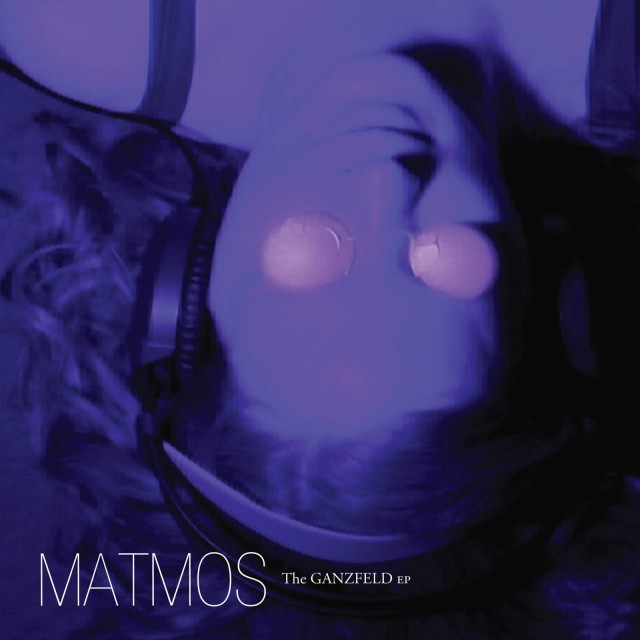It’s a fitting way to honor computer music: Matmos produced an electronic reimagining of computer pioneer Alan Turing’s favorite tune, the Irish traditional song “Molly Malone.” The results are haunting, made more so by Mr. Turing’s untimely demise and unjust prosecution for his open homosexuality. (According to legend, he played it on violin to the police who came to arrest him. Whether true or not, it’s a touching anthem.)
2006’s “Molly Malone” is now available as a free download on Bandcamp. Fovea Hex’s Clodagh Simonds provides the heart-wrenching vocal line. The track by way of the FOR ALAN TURING EP, commissioned by The Mathematical Sciences Research Institute at Berkely, California. It’s just as worthy of mention today as eight years ago, an imaginative marriage of traditional song and timbre with idiosyncratic digital technique.
That was then; this is now. And in the latest track from Matmos, the Baltimore-based American duo is no less inventive.
The sound is new, to be sure, though as always unfused with raw, acoustic interweavings of percussion. The big addition, though: telepathy.
Newly signed to Thrill Jockey Records, M. C. Schmidt and Drew Daniel are making songs that, climbing atop impossible rhythmic Tinker-Toy towers of intricate construction, somehow manage to reach post-pop clarity. And they turn, improbably, to parapsychological experiments. That brings a fresh answer to the “where have they been lately?” question you might ask a band between album releases. I’m going to let the press release explain this one:
For the past four years the band have been conducting parapsychological experiments based upon the classic Ganzfeld (“total field”) experiment, but with a twist: instead of sending and receiving simple graphic patterns, test subjects were put into a state of sensory deprivation by covering their eyes and listening to white noise on headphones, and then Matmos member Drew Daniel attempted to transmit “the concept of the new Matmos record” directly into their minds. During videotaped psychic experiments conducted at home in Baltimore and at Oxford University, test subjects were asked to describe out loud anything they saw or heard within their minds as Drew attempted transmission. The resulting transcripts became a kind of score that was then used by Matmos to generate music. If a subject hummed something, that became a melody; passing visual images suggested arrangement ideas, instruments, or raw materials for a collage; if a subject described an action, then the band members had to act out that out and make music out of the noises generated in the process of the re-enactment.
Funny coincidence: I hear a similar process is employed by publicists and PR when trying to project into the minds of us writers, or to scan our minds to find out why the interview we did months ago still hasn’t printed. (I swear, I’m working on transcribing that right away!)
This is the point at which I explain what the new single, “Very Large Green Triangles,” sounds like.
But that would be silly. You can hear the track. And anyway, you don’t need to read CDM: I’ll simply take a few more swigs of coffee and project what I think of the track into your mind.
Ahem.
Did it work?
Below, you can read – fine, we’ll skip the telepathy – the album notes for this particular track, so you get a sense of what these mind-experiment texts look like.
But as if this hasn’t given you enough reason to look forward to a new Matmos record, here’s another: they come with a really killer extra in the limited edition.
In order to facilitate the recreation of the exact perceptual circumstances of the original test subjects who participated in the Ganzfeld experiment, Thrill Jockey has teamed up with audio manufacturers Incase to release a limited edition of “The Ganzfeld EP” in a special individually signed and numbered box in which each copy of the vinyl or CD will be accompanied by a pair of Incase headphones and a pair of opaque goggles.
Someday, artists will run out of gimmicks of pack-in things to make you buy their physical releases. Clearly, that day is not today.
In fact, I think sensory deprivation goggles should come with all releases, to block out Pitchfork reviews.
But if my Tuesday evening ramblings make you similarly wish to block out tabs, do take a look at Matmos’ website. It’s full of wonderful goodness, and still more answers to the question of what they’ve been up to. In short: they’ve been up to the kinds of things you might do if you were Matmos.
Here’s what inspired “Very Large Green Triangles”:
1. Very Large Green Triangles (Edit) 3:40
Drew Daniel: Editing, Sampling, Sequencing, Cacaphonator, Wood block, Bells, Mix. M. C. Schmidt: Treated Piano,
SH 101, V-Synth. Ed Schrader: Voice. Percipient: Ed Schrader
AHHHH eeee hah. AHHH eeee uhhh. [hums / moans ] Hmm. I think that’s . .. [ moves head ] haaaa heyyyy eyyy ahhhh ooo Something with green triangles, I don’t know what. Very large green triangles. Artificial, like the size of tall buildings and mountains made of transparent plastic in layers but very sturdy. Sturdy, tall triangles, transparent with metal beams. And these notes working within those triangles, moving upwards. And when it gets to the point of “hmmm” that’s like the slender part of the triangle kind of a connection between those two for some reason. That’s the gist of what I have I think uh. [repeats the singing] Maybe somehow these triangles communicate something be it through beams or uh almost in a ritualistic kind of religious way, it’s like a beacon of some kind, communicate something not too readily apparent but more in the rhythm of daily things people are just do: taking the bus walking around those triangles are ever present and they’re humming in the timbre and texture of everything that’s being done, I think that’s, yeah . . . they’ve kind of built themselves towards identity, it was chance that they were built, it was chance that it happened, but once they were there, you couldn’t imagine the world without them [sings more] but a dark hunter green hunter green like an emerald or more hunter green like a pine tree. Giant triangles, they’re on snowy plains that people don’t normally look at and see but they know they’re there their presence is the presence is within the rhythm, it doesn’t have to be looked at, the depth and height of them is respected intuitively and acknowledged without having to actually see them, perhaps a trust and a belief. They’re very large. They’re the size of large skyscrapers. They look like cells cuz they’re all inter-mingled, inter-connected. Maybe thousands
of years from now someone would stumble upon them accidentally and sense something about them but not quite know what they were, but sense their integrity and their importance but not have any clue what they are about, like Stonehenge or something, but an aspect of a technical culture maybe a culture many many years from now. So an ancient relic of the future, yeah? But they almost look phony too, that’s the thing. They look phony in some respects but there’s a phoniness to the color and the transparency and you feel its importance but they laymen of today might look and you know think, oh plastic and whatnot. Not phoniness but a seemingly thin, seemingly destructible but having stood there many many years.
If you’re in London, you just missed Matmos, but Northeast Corridor America: mark your calendars for September.
Sept 13 – Baltimore, MD at Ram’s Head Live (Thrill Jockey 20)
Sept 15 – New York, NY at Webster Hall (Thrill Jockey 20)
The Ganfeld EP, is out October 16th, followed by the full-length, The Marriage of True Minds, early 2013.
Artist site:
http://vague-terrain.com/

